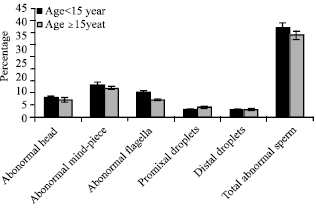Research Article
Sperm Abnormalities in Post-thawed Semen of Tunisian Arab Stallions
National Agronomic Institute of Tunisia
S. Ben Said
High School of Agriculture of Kef, Tunisia
B. Benaoun
National Stud Farm of Sidi Thabet, Tunisia
C. Chetoui
General Direction of Animal Production, Ministry of Agriculture of Tunisia
M. Ezzaouia
National Stud Farm of Sidi Thabet, Tunisia
M. Ben Mrad
National Agronomic Institute of Tunisia










